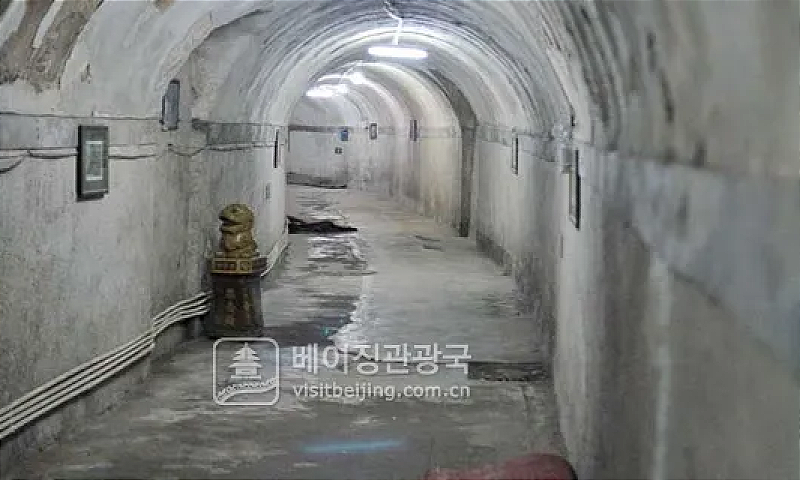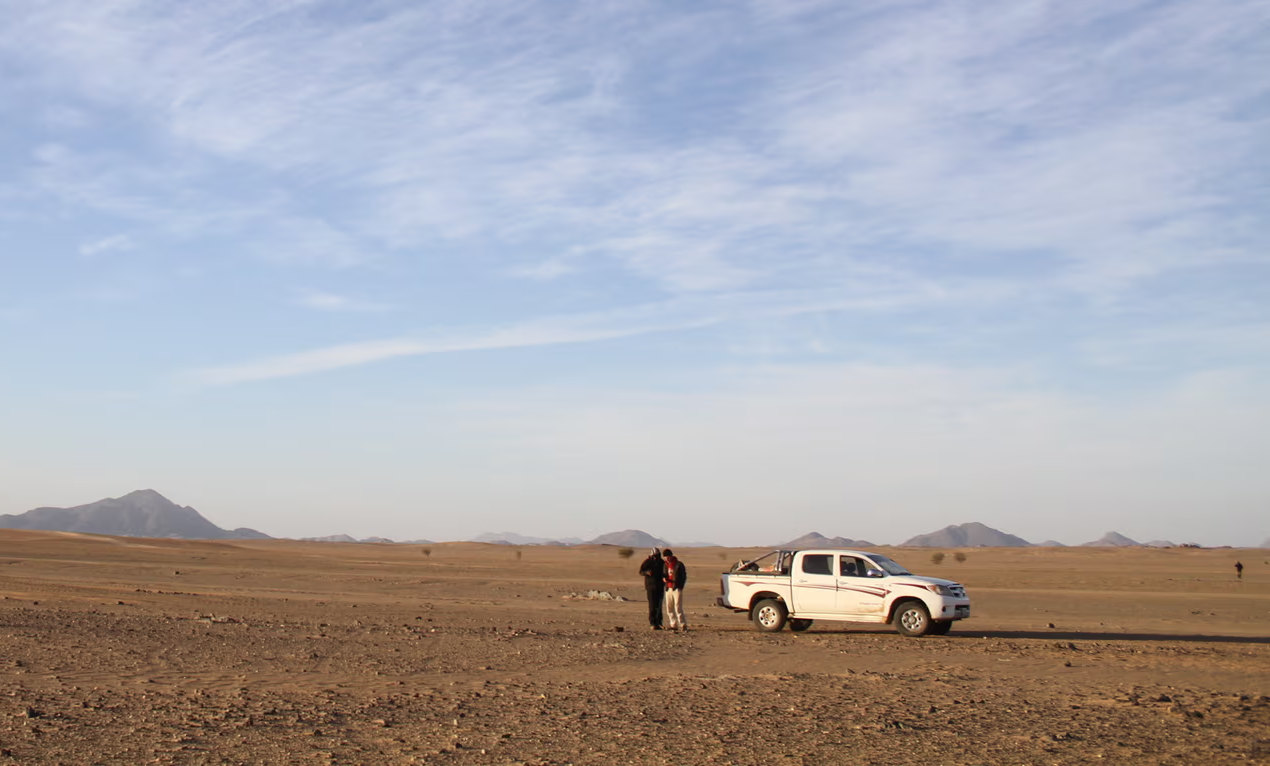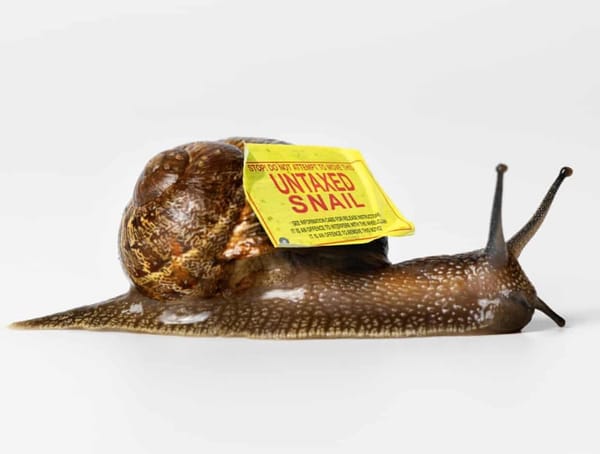There's a huge network of tunnels underneath Beijing

From Wikipedia: "At the height of Soviet–Chinese tensions in 1969, Chinese Communist Party chairman Mao Zedong ordered the construction of the Underground City. The Underground City was designed to withstand nuclear, biochemical and conventional attacks. The government claimed that the tunnels could accommodate all of Beijing's six million inhabitants upon its completion. The complex was equipped with facilities such as restaurants, clinics, schools, theaters, factories, a roller skating rink, grain and oil warehouses, and a mushroom cultivation farm. Elaborate ventilation systems were installed, with 2,300 shafts that can be sealed off to protect the tunnels' inhabitants from poison gases. Gas- and water-proof hatches, as well as thick concrete main gates, were constructed to protect the tunnels from fallout."
Even in one of the world's newest deserts there are still signs of life

From Noema: "Until the 1960s, the Aral was the world’s fourth-largest inland body of water, covering an area of around 26,300 square miles. Its Uzbek name, Orol Dengizi, meant “Sea of Islands.” In the space of the last six decades it has shrunk to a tenth of its former size, one of the worst ecological disasters in history. Technically an endorheic lake, a body of water with no natural outlet, its existence was dependent on the inflow of two rivers: the Amu Darya and, farther to the north, the Syr Darya. Under Soviet mismanagement, both rivers were diverted into arid steppe to irrigate booming cotton farms. The planners knew what was happening but considered the loss worthwhile; the Aral became what ecologists term a “sacrifice zone.” As the shoreline receded year by year, the water’s salt content increased, causing a mass die-off of aquatic species. The exposed seabed has become the Aralkum, the world’s youngest desert."
Newly discovered fungus turns Irish cave spiders into zombies

From Phys.org: "While filming a BBC series in Northern Ireland, scientists identified a new type of fungus found on a cave spider. Originally located on the ceiling of a gunpowder store, all the infected spiders were positioned on the roof or walls of the caves. These normally reclusive spiders left their lairs or webs and migrated to die in exposed situations, essentially, mirroring the behavior of ants infected by fungi of the genus Ophiocordyceps previously reported from the rainforest of Brazil. Such manipulation of the host in order to favor dispersal of the fungal spores engendered the description of 'zombie-ant fungi' and led to the publication of a number of zombie-fungus themed books, as well as to a popular video game and the television series, The Last of Us."
Hi everyone! Mathew Ingram here. I am able to continue writing this newsletter in part because of your financial help and support, which you can do either through my Patreon or by upgrading your subscription to a monthly contribution. I enjoy gathering all of these links and sharing them with you, but it does take time, and your support makes it possible for me to do that. I also write a weekly newsletter of technology analysis called The Torment Nexus.
Welcome to Bir Tawil, the land that no one wants

From The Guardian: "Bir Tawil is one of the largest chunks of unclaimed land on earth: a tiny sliver of Africa ruled by no state, inhabited by no permanent residents and governed by no laws. To get there, you have two choices. The first is to fly to the Sudanese capital Khartoum, charter a jeep, and follow the Shendi road hundreds of miles up to Abu Hamed. Drive out to the point where the occasional scattered shrub or palm tree has long since disappeared and given way to a seemingly endless, flat horizon of sand and rock – out to the point where there are no longer any landmarks. After a day like this, then a night, and then another day, you will finally cross into Bir Tawil, an 800-square-mile cartographical oddity that separates Egypt and Sudan. Both nations have renounced any claim to it, and no other government has any jurisdiction over it."
Mark Twain lost a fortune investing in a hot new typesetting machine

From History of Information: "Mechanical typesetting and type distributing remained an inventor's challenge till the end of the 19th century. Perhaps the most elaborate effort to mechanize and nearly robotize manual typesetting and distributing of lead type was the effort in which Mark Twain lost a great deal of money. Between 1872 and 1888 James W. Paige developed the Paige Compositor, the first machine to simultaneously set, justify, and distribute foundry type from a common case using only one operator. The machine which Paige patented in 1874, was immensely complex, containing 18,000 parts and numerous bearings, cams, and springs. It could average 12,000 ems per hour, but had "continual need for adjustment based upon trial and error." American writer Mark Twain sank $300,000 into the development of this machine, of which only two were ever built, one of which survives in Mark Twain House in Connecticut."
What juggling looks like from a different perspective
Juggling seen from a different perspective..
— Buitengebieden (@buitengebieden) February 2, 2025
pic.twitter.com/w2rblRSVBh
Acknowledgements: I find a lot of these links myself, but I also get some from other newsletters that I rely on as "serendipity engines," such as The Morning News from Rosecrans Baldwin and Andrew Womack, Jodi Ettenberg's Curious About Everything, Dan Lewis's Now I Know, Robert Cottrell and Caroline Crampton's The Browser, Clive Thompson's Linkfest, Noah Brier and Colin Nagy's Why Is This Interesting, Maria Popova's The Marginalian, Sheehan Quirke AKA The Cultural Tutor, the Smithsonian magazine, and JSTOR Daily. If you come across something interesting that you think should be included here, please feel free to email me at mathew @ mathewingram dot com



